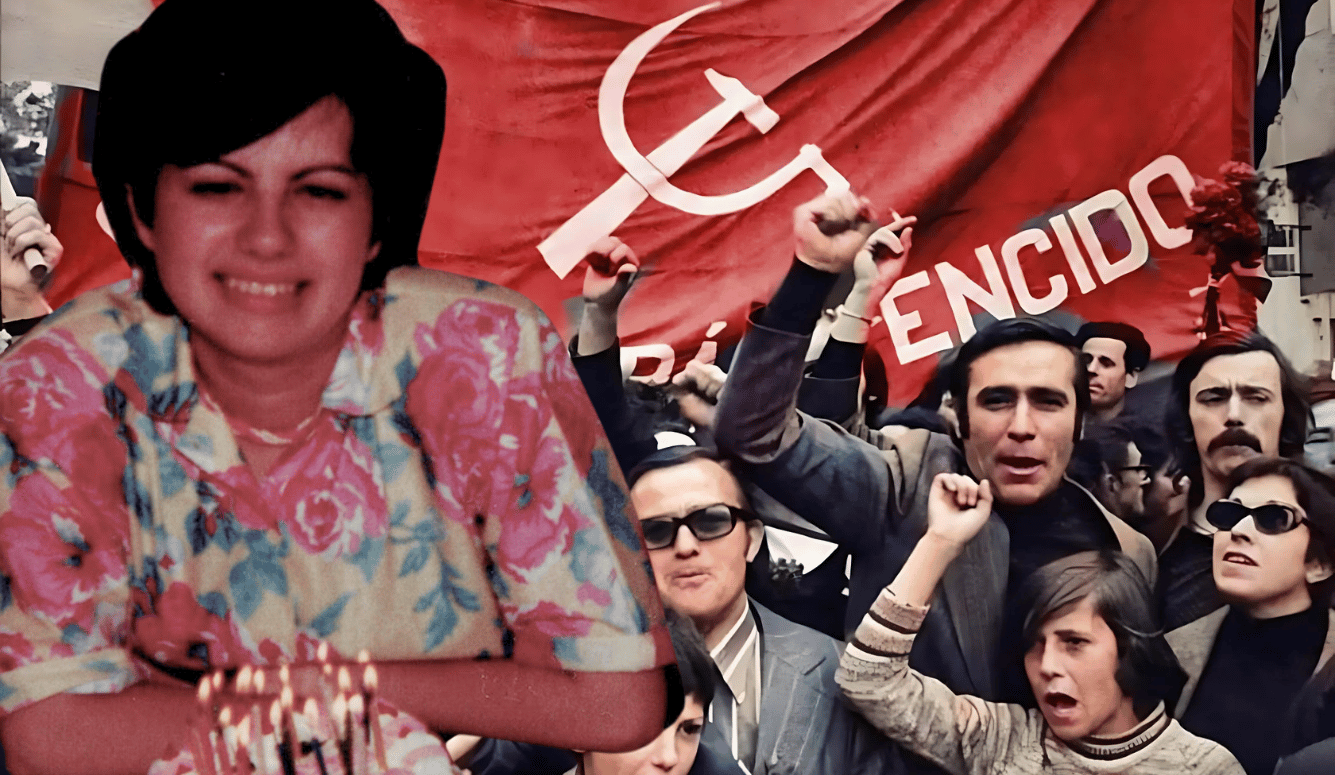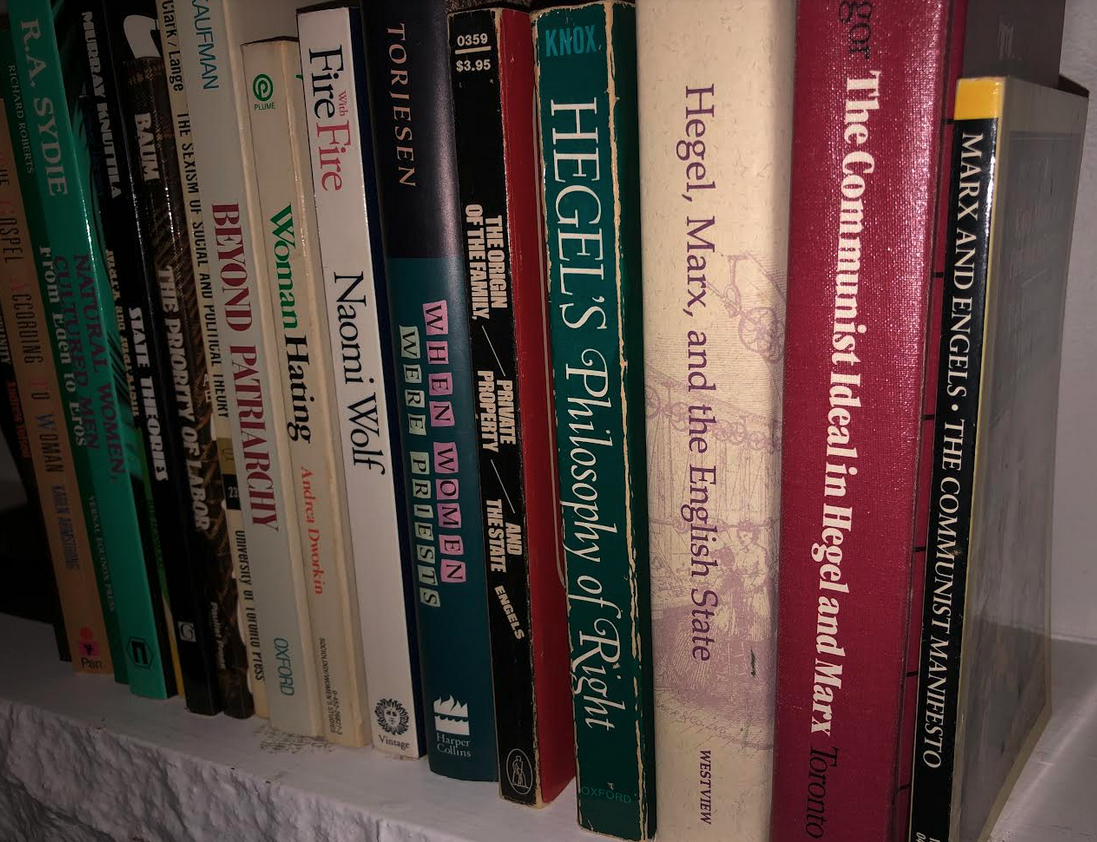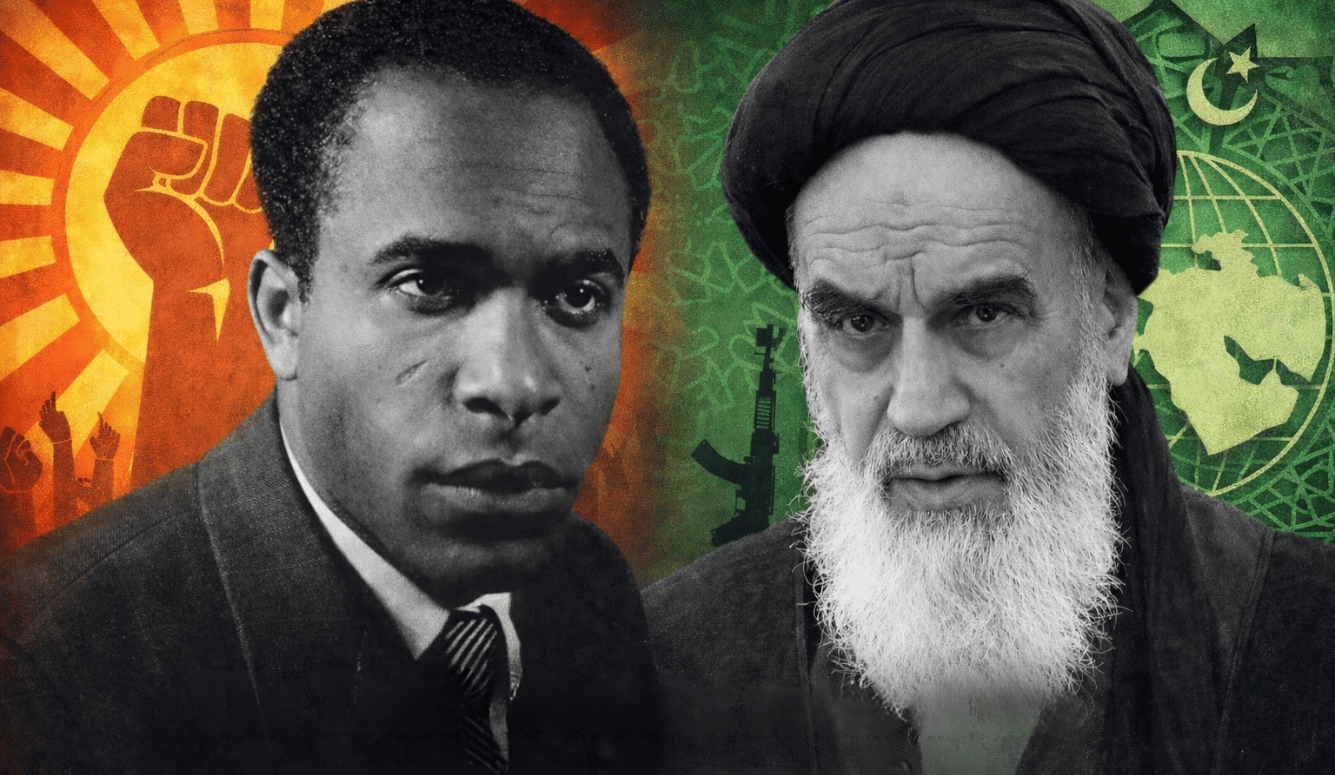Diversity
DEI Without the Dogma
A business-communications coach reflects on the connections between her college-era Marxist beliefs and the identity-based fixations that have come to dominate her industry.

Arm-in-arm, the three of us prowled cobblestoned streets in the pitch black of a moonless night, hurling rocks at factory windows. Inebriated by our socialist fervour, Jennifer, Karl, and I followed each missile with a shouted slogan, damning the capitalist managers who, come morning, would bear witness to our brave act of anti-capitalist defiance.
But when morning broke, those managers never arrived—because their factory existed only as a dream. Still, I was giddy upon waking. For what better proof was there of my true Marxist zeal than that I furthered the revolutionary struggle even in my dreams—and with no less a hero than Karl Marx himself making a cameo?
I was a 21-year-old feminist studying at a Canadian university. The 1980s being not quite over, the USSR was still in existence, and the gates to Marx’s promised workers’ paradise hadn’t yet closed. I couldn’t wait to report these new nocturnal raptures to my academic mentor.
My Portuguese parents immigrated to Canada from the Azores in the 1960s, seeking a better life. Just a few years after arriving, however, my father became too ill to work. My mother became the family’s sole breadwinner, notwithstanding her few marketable skills and poor command of English. Getting by meant working twelve-hour days at minimum wage.
When I was six years old, my father passed away, and my mother had to find a job that allowed her to be home at night to look after my sister and me. So she started her own cleaning business, a project that would provide all of us with a window into Canadian class divisions.
Most of my mother’s clients were wealthy business owners and medical professionals. Some treated her like family, but others acted more like the flinty capitalists of communist caricature. Though young, I was old enough to understand the desperate tone in her voice when she’d call these customers, seeking a meagre raise to help keep up with the cost of living.
Even when mom was sick or in pain, she had to work. Otherwise, there’d be no money to pay the bills. And even after coming home exhausted, she’d still have to cook dinner and clean the house. (My appreciation for her hardships only increased decades later, when she was diagnosed with schizoaffective disorder.)
Because we had no money for babysitters, Mom would take me with her to clients’ homes during the summer holidays (as well as staff professional-development days during the school year). I saw fancy silver tea sets, fine China, Royal Doulton figurines, and multiple televisions. (I’m sure there was much more, but these are the things that a young girl notices.)
I couldn’t understand how people could live so differently. My mom worked hard. What was my family doing wrong?
“Jennifer” and I became friends in Grade Nine. She was different from the rest of the girls in my group. While most of us were children of blue-collar immigrant families, Jennifer had a more privileged upbringing. She was slim and elegant, not to mention a fluent Spanish speaker and a vegetarian (a category that is now common among young people, but which was then somewhat exotic).
While Jennifer’s (white) parents were born in Canada, her first few years of life were spent in Colombia. There, her father worked as an engineer, and the family employed servants and a nanny. Upon returning to Canada, they retained the refined manners of the privileged class.
But, to her credit, Jennifer was no snob. Like me, she became engaged in the struggle for social justice (as we would now call it) at our Catholic high school. We signed up for women’s-rights marches, and went door to door asking neighbours to sign petitions against nuclear-weapons testing on Canadian soil. Our inspiration was a progressive teacher who roomed in some kind of religious “collective” with like-minded pacifists.
We both lived in London, a medium-sized city in southwestern Ontario, but in different neighbourhoods. Jennifer was in Byron, a high-end enclave, while my family resided on a block then populated largely by Slavic immigrants who’d fled Europe after the Second World War.
While we were making the rounds with one of our petitions, one of those immigrants angrily shooed Jennifer away, accusing her of being a “communist.” Being still several years away from my embrace of full-fledged Marxism, I wasn’t yet fully clear on what the accusation meant. Nevertheless, the pushback was disorienting. At our Catholic school, we’d been trained in “liberation theology,” and so imagined that our Christian duty was to free the oppressed. But these immigrants had their own ideas about oppression. One of them told us flatly that Canada should be armed “to the teeth” against the Russians.
Marxism wasn’t explicitly promoted at our Catholic school, and not just because Marx had dismissed religion as an “opiate of the masses.” The Cold War was still on, and the Soviet Union remained a threat to the West. When one of our classmates told his parents about our social-justice lesson plans, his father, a real-estate agent, suspected this to be pro-Russian propaganda. He called the principal and told him to get rid of this “communist” educator.
Like most young Marxists, I eventually outgrew the movement. Following graduation, I entered the workforce as a dues-paying contract clerk, but then became alienated from my union—whose interests, I’d naïvely imagined, were supposed to align with the “proletariat”—when it ignored my complaints about sexual harassment.
Meanwhile, Jennifer never lost her idealism. And I think our contrasting backgrounds explain why we took different paths in our adult years.
For me, the draw of Marxism had emerged from the injustices and indignities associated with the poverty my family endured. (In the modern parlance, I had “lived experience.”) I saw communism as a tool to improve the world in practical ways—a materialist thesis that could (and would) be disproven by facts—as well as an extension of the Christian injunction to share one’s wealth with the poor.
For Jennifer, on the other hand, a lot of leftism’s appeal seemed to be tied up with the fact that she’d grown up enjoying a pampered lifestyle while being surrounded by poorer Colombians. She experienced “white guilt” (as we would now call it). And so she followed an uninterrupted glide path from teenage Cold War Marxism to state-of-the-art progressive identity politics. (Later in life, she gave birth to two boys whose gender she announced to be indeterminate; abandoned Canada for Latin America; and adopted a local child.)
Following high school, I headed to an affiliated college of Western University (formerly the University of Western Ontario),originally intending to earn a degree in social work, but then migrating to sociology and anthropology. That’s when I fell in love with Marx, Engels, and hard-left feminism.
Oppression was a recurring theme in my classes—including the idea that one could experience multiple, overlapping varieties. This resonated with what I’d personally witnessed during my childhood, especially the Marxist feminist idea that working women were doubly oppressed—once as exploited labourers in “pink-collar” jobs; and then again at home, where their unpaid domestic toil was taken for granted by husbands. Add in the discrimination faced by immigrants and women of colour, and you had triple oppression.

Geopolitics was also a popular topic. These were the days when Canadian leftists were focused on fighting free trade (NAFTA, in particular). And our classes featured film screenings that portrayed international trade agreements as tools of American hegemony. Like many of those around me, I adopted a certain way of speaking. “Capitalist,” “petty bourgeois,” “workers’ revolution,” and “class struggle” were all part of my day-to-day lexicon.
I had several jobs that helped me pay for university. One was a waitress gig at a trendy restaurant in downtown London, where I waited on some of the city’s wealthiest residents. My colleagues and I worked crazy hours without breaks and wore ourselves ragged in our quest for good tips.
The owner, always seeking to cut costs, once scheduled me as the restaurant’s lone waiter. This led to a hellish night, with the low-light coming when a napkin I was holding caught fire while I served fondue. As in a (not at all funny) madcap scene from a movie, I ran blindly for ice water to soothe the burning, after which I crashed into a food tray. Later that night, still nursing my pain and humiliation, I concluded that none of this would have happened had it not been for the greedy capitalist who ran the restaurant.
Modern-day campus Marxists often see themselves as promoting a posture of “resistance.” But in my day, that was not part of the nomenclature. We preferred “revolution,” which connected to the idea of freeing oppressed workers from their chains.
At work, I once witnessed a miniature revolution led by my colleague Carlos, a Nicaraguan documentary-maker and photojournalist refugee who’d fled Sandinista persecution. He’d been relegated to a filthy part of the restaurant’s kitchen—where he washed dishes next to a bathroom with an overflowing toilet. Day in and day out, I witnessed how this skilled, humble, and intelligent man was being exploited and mistreated.
One day, Carlos apparently had a basta! moment. He took a ketchup bottle, and wrote, “Just because I immigrant no mean I pig,” and left, never to be seen again. I proceeded to lecture my co-workers and bosses about how badly he was treated.
In my academic milieu, meanwhile, there were palpable rewards associated with this kind of Marxist stance. In my case, these included promises of mentorship, and a pair of research-assistant positions that helped pay for my education.
All of which is to say: I wasn’t really any kind of revolutionary. I’d merely joined what was effectively a bourgeois club whose membership consisted of professors, graduate students, and research and teaching assistants like me.
I found that if I wrote a paper infused with a Marxist-style conflict-theory paradigm, I’d almost invariably earn at least a B (which was an excellent grade back then). One influential professor in particular, who spent her sabbaticals in Latin America documenting the exploitative behaviour of Canadian capitalists, was quite happy to see such ideas read back to her. Another later sent me two magazine subscriptions as a graduation gift—one to a feminist publication called Canadian Women’s Studies, another to The New Internationalist, a socialist-leaning outlet operated as a worker-run co-operative. (Amazingly, both of them are still around.)
Then—as often happens with young people who imagine they’ve found their now-and-forever guiding ideology—real life went off-script: I met and fell in love with a Polish immigrant, someone who’d actually lived in the sort of communist society that I’d been idealising. On our first date, we sat in his woodworking shop, sipping coffee and talking at length about Marxism and feminism. In this way, I learned about communist Poland’s shoddy housing, food shortages, low productivity, epidemic alcoholism, stunted public discourse, and outright government censorship. This was not the land of happiness and plenty depicted in communist propaganda posters. The Polish national mood, he told me, was one of fear and pessimism.
In 1995, I returned to my former university, this time to study political science. And I found a very different ideological atmosphere in my new department.
When I approached a professor to discuss the correct theoretical paradigm with which to approach a paper I was working on, he looked at me as if I were a relic from the past. “Communism died in 1989,” he told me. “You don’t have to write your paper with any paradigm. Just do your research and present it.”
During this period, my political views became more nuanced. I now had professors hailing from different points on the political spectrum. Many were on the left. (This was a Canadian university after all.) But some were not. For the first time, I heard a professor—a former nun, as it happens—explicitly slam Marxist theory.
Specifically, she challenged the notion that poor people comprise a monolithic, morally virtuous class of victims, while capitalists are uniformly sinister. She gave the examples of poor people who commit violent crimes, and wealthy business owners who donate to causes that improve the quality of life for others.
These arguments might sound obvious. Everyone of ordinary common sense who isn’t blinded by ideological or religious preconceptions knows that people are complicated; and that they can’t be classified, like insects, into good and bad boxes. But as a recovering Marxist, I found it bracing to hear someone say so out loud.
Moreover, this, too, aligned with my “lived experience”: As noted above, some of my mother’s clients seemed to be selfish and uncaring. But others were compassionate and generous.
Following graduation, I worked in the not-for-profit sector for about a decade before starting my own diversity-training business—a calling that reflected my enduring interest in promoting women’s issues and the business case for hiring Indigenous applicants and workers with disabilities, as well as my desire to help immigrants integrate into Canadian workplaces.
I can hear that sharp intake of breath from readers upon reading those two words, diversity training—a job category whose reputation has been somewhat tarnished over the last few years. But as I observed when I began work in this field, at a time when things were far less politicised, diversity training (done properly) can deliver real value.
Around 2000, when I started my business in London, the workplace grievances and challenges one observed were markedly different than today’s variety. The view then was that we had practical problems to solve, rather than ideological ones.
Disgruntled middle-aged men alleged employment equity was the culprit when they were laid off. We had labour shortages in some sectors, and immigrants were applying for jobs in droves. Yet human-resources departments didn’t have the expertise needed to assess the credentials of these new workers, or understand the cultural differences that played out in interviews. Knowledge about how to facilitate accessible workplaces was scant. People were living longer, healthier lives. And, for the first time in history, we were faced with (in some cases) as many as four generations of employees working together.
In some ways, the then-dominant approach to diversity training was the opposite of the identity-fixated approach that’s become popular in recent years. Many of its practitioners (including me) were inspired by the civil-rights movement, feminism, and gay rights—creeds that focused on extending society’s benefits to all. Instead of delivering abstract sermons on the evils of “whiteness,” “toxic masculinity,” “settler colonialism,” or the “gender binary,” diversity trainers tended to focus on our shared human characteristics.
While modern diversity trainers who follow the dogmas of anti-oppression theory might start a module by dividing people into different “affinity groups,” we tried to get people involved in team-building projects. We didn’t ignore differences, but our focus was on how they might be leveraged successfully in the workplace—as with a foreign-language speaker who might be tasked with helping customers who require service in their native tongue.
Yes, participants learned about biases, cultural sensitivity, and the problem of intolerance—but in a friendly environment where they were free to debate ideas. Our points of difference were recognised (and sometimes called “diversity dimensions”), but they weren’t bolted into a paradigm of identity that focused on trauma.
It was about ten years ago when I observed my field undergoing its seismic cultural shift. Suddenly, the colour of one’s skin seemed to be the defining criterion that would make or break a trainer’s application for a grant or training contract. Job descriptions began specifying “person of colour” or someone with “lived experience.” In some cases, clients indicated a preference for people of diverse sexual orientations and gender identities.
My own identity is hardly bereft of markers of “oppression.” And I oppose the presumption that a first-generation Portuguese-Canadian who grew up in poverty while being raised by a single mother with mental-health issues doesn’t also have valuable insights about diversity to offer.
Marx himself likely would have had little time for these identity-based ideological fads—which I’m guessing he’d recognise as upper-middle-class preoccupations that do little to help the working class. But the style of rhetoric I now observe in the diversity, equity, and inclusion (DEI) field, not to mention the ideologically blinkered, doctrinaire approach to truth-seeking, certainly does bring me back to my days as a college Marxist.
In my experience, this approach has severely undermined the effectiveness of DEI training, as it presents human beings as representatives of tribes (each classified in binary terms as either oppressed or oppressor), instead of as unique individuals. Skilfully delivered diversity training helps improve employee and customer relations while giving participants the tools to enhance their job performance and maintain a respectful workplace.
These are manageable goals that a diversity trainer can help with. By contrast, if a worker is instead told that his or her problems are rooted in some original sin connected with his or her identity, the training is more likely to be useless—or even disastrously counterproductive.
A trainer’s goal should be to nudge workers to become more considerate and professional in their behaviour—not cleanse their souls of ideological impurities, as in a communist struggle session. Instantly denouncing workers as “racist,” “sexist,” “transphobic,” or whatnot isn’t helpful because it serves to escalate a coaching exercise into an attack on a person’s moral character—or even his or her validity as a human. This is why I suggest that fellow diversity trainers reevaluate their methods by looking to proven training methods from the past.
Moreover, when teaching my anti-bullying and anti-harassment modules, I’ve noticed an institutional reluctance to assign people of colour, women, those with disabilities, Indigenous Canadians, and immigrants to one-on-one work that could assist them with anger management, empathy development, and other soft skills. A common assumption is that only white men can be bullies, which I absolutely assure you is not the case.
Fear of violating race- and gender-based mores now serves to steer managers and human-resources professionals away from investigations that may lead to off-message findings; while also discouraging rank-and-file employees from reporting grievances against members of “oppressed” groups. In fact, I’ve sometimes observed HR officials flip complaints on their head, accusing the complainant of bias while summarily exonerating the complained-of party—so as to align their conclusions with expected group-based oppressor-oppressed dynamics.
Marxism appealed to me when I was young, as it does to many young people, because it presented a simple good-versus-evil template to explain the injustices of the world. But humanity is more complex than that. And my political science professor was correct when he told me that we shouldn’t rely on rigid paradigms to make sense of the world and categorise the moral value of fellow humans.
This is a lesson I’d ask DEI instructors to reflect on. If social justice is the goal, employing divisive, shaming tactics aimed at exorcising sinful thoughts from the proletariat masses is self-defeating. Instead, we should see ourselves as coaches who simply help individuals behave respectfully and collaboratively in their workplaces. Otherwise—if I may adapt my old Marxist jargon—it’s only a matter of time before our industry is dismissed as an opiate of the elites, and swept into the dustbin of industry.





